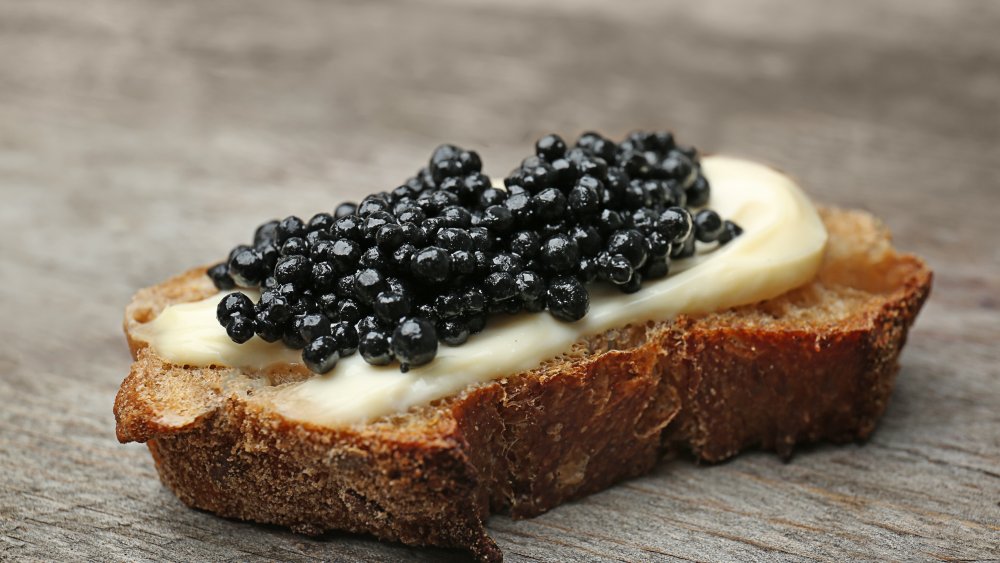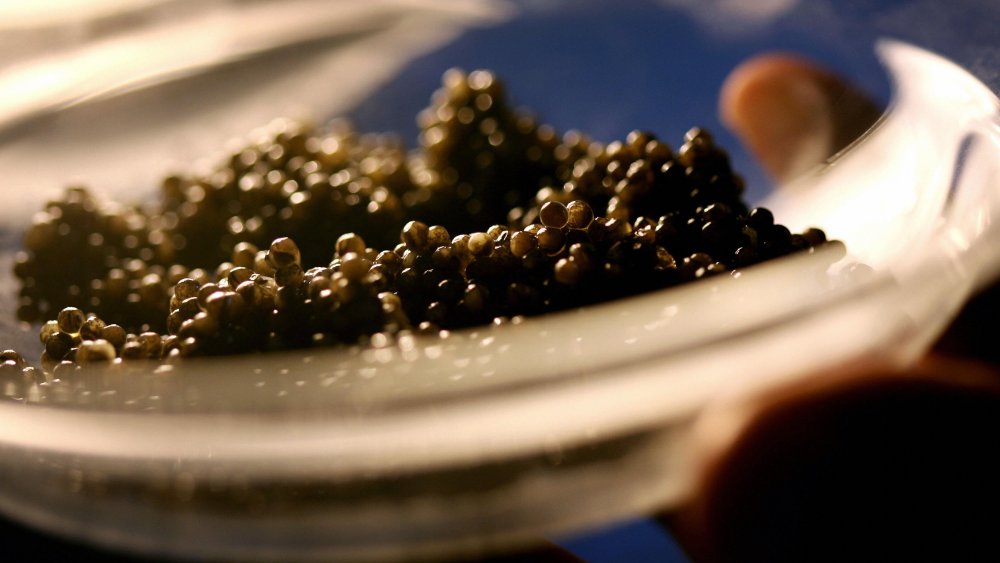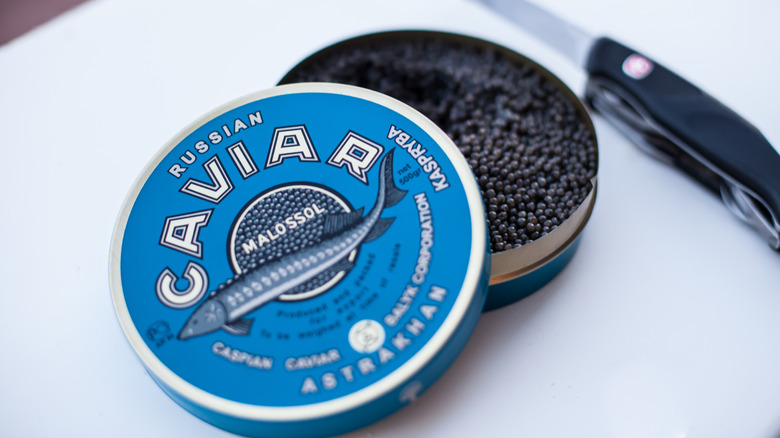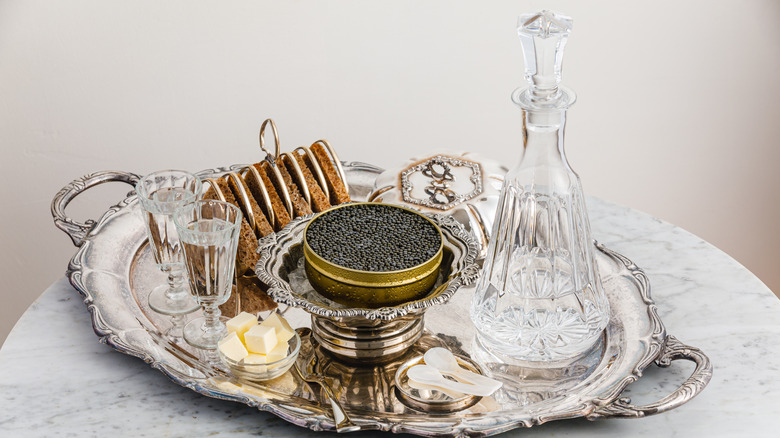What Does Caviar Taste Like?
Do you remember the first time you tried caviar? Wait, what's that? You've never tried caviar? Well, there's no reason to worry, because you're certainly not alone. Caviar isn't exactly a common item on most restaurant menus; in other words, you shouldn't expect to see a caviar quesadilla on the Chili's menu anytime soon.
First off, let's address what caviar is. According to caviar merchant Marky's, caviar is "processed, salted, non-fertilized sturgeon roe." ("Roe" is simply fancy speak for fish eggs.) As MasterClass explains, all forms of caviar can be categorized as roe (as roe just means "fish eggs"), but not all roe is actually caviar. Marky's notes that some countries may call other types of fish roe, such as salmon or trout, "caviar," but that's not strictly accurate.
Caviar just doesn't have the same sort popularity as say, Nutella, and there are likely a few reasons for that. For starters, it's pretty pricey. According to Guinness World Records, caviar is the most expensive food on the planet. And "Almas," a caviar that comes from Iranian Beluga fish, can cost as much as $34,500 per kilo. That's a lot of dough to spend on something to eat with a cracker. There's also the issue of caviar itself; some folks are a bit skeptical about eating fish eggs. If you haven't tried this delicacy yet, here's what to expect.
Caviar has a unique taste
As far as its flavor profile goes, caviar is somewhat salty and "briny" in taste, according to some taste-testers on YouTube. Cheaper caviar is also much more likely to have a fishy taste than the higher-end stuff, which should have more of an ocean undertone taste that's not too overpowering.
One aspect that's going to stand out, whether you're dining on cheap caviar or the primo stuff of Russian royalty, is the texture. The texture of the roe feels like little beads in your mouth that pop as you chew, per Sasanian Caviar.
One thing people seem to agree on is that caviar isn't not for everybody and can be an acquired taste. While one person on Reddit thought it tasted like "salty bubbles," others raved about it. "I grew up eating caviar (both black and red). I think it is absolutely amazing especially slathered on a piece of black bread and butter," said one fan. Taste, of course, is subjective, so perhaps the best thing is to try it for yourself and see how it scores with your palate.
Different caviar varieties have different flavors
As The Spruce Eats explains, not all types of caviar are created equal. Osetra caviar is often described as "nutty" and "briny," the outlet notes, while kaluga caviar is best described as "buttery." Other popular types of caviar include sterlet, hackleback, and sevruga.
Beluga caviar, meanwhile, has been banned from import into the United States since 2005, per The New York Times. While this is often considered the most highest-end option available, the beluga sturgeon is critically endangered, per the International Union for Conservation of Nature. For this reason, many environmental advocates argue that you shouldn't eat beluga caviar.
So, which type of caviar should you turn to if you want the really high-end stuff? Gourmet Food Store describes osetra caviar as "the next best thing" to beluga caviar, thanks to its "nutty and rich flavor" and its medium-sized eggs. (As The Spruce Eats notes, "firm, large eggs" tend to be more expensive than other caviar varieties.) Conversely, if you're looking for a slightly more affordable caviar variety, sevruga is a good option, with eggs that are smaller than osetra roe.
How do you serve caviar?
So, you've heard all about that salty fish egg taste and want to try caviar for yourself. But how do you go about serving it? According to MasterClass, caviar can accompany pretty much "any meal that benefits from a salty taste and buttery flavor."
Caviar and other types of fish roe are often served atop sushi rolls or with blinis, as MasterClass notes. Don't feel like whipping up a batch of Russian pancakes? Pretty much any type of neutral cracker or bread will pair nicely with a creamy spread and a spoonful of the salty fish eggs.
And if you're serving caviar as part of an appetizer board, Imperia Caviar suggests placing the tin atop some ice and letting guests scoop it onto crackers themselves. Just don't use a metal spoon, which can oxidize and will affect the taste of the roe, the company warns.



